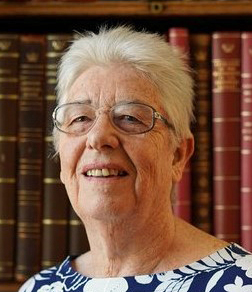Dancing and Democracy: critical transitions in English theatre dance 1642 – 1660
(Anne Daye)
The English Civil War of 1642 was followed by the Commonwealth or Interregnum, a form of republican government under Oliver Cromwell, until the Restoration of the monarchy in 1660. Subject to a more powerful Parliament, Charles II did not have the same power or finances as his Stuart predecessors, resulting in profound change to theatre arts in Britain.
The court masque had fostered the emergence of a new profession of dance in England which was at a critical point of development when war disrupted lives and closed theatres. This paper will trace evidence for a hybrid form of the court masque combining drama and dance in the 1630s, a prototype of the ballet d’action, performed both in court settings and in the public theatres. This new genre could be organised to conform with the strictures of that regime. The theatrical entrepreneur, William Davenant, with a licence to open London theatres in 1660, was able to mount performances of drama, opera and dance that the royal court could not afford. Theatre dance had to survive in the commercial environment of the public theatres, subject to economies of scale but also freedom to experiment.
The timing of the Civil War was critical, nor only for the British system of government but also for dance. It led to the development of parliamentary democracy but severed dance from state support, unlike most European countries. In fact, state funding for the arts, including dance, did not commence until after the Second World War, following another transition in official attitudes to the arts.
Anne Daye, Bedford, UK
 Anne Daye is a teacher, researcher and writer on historical dance, primarily of social and theatre dance of England within the European Renaissance. Her doctoral thesis 2008 broke new ground by discussing the performance and dance of the Jacobean masque. Investigating the vernacular forms of British dances is central to her studies: morris, country dance, reels, jigs, hornpipes. Anne publishes widely, most recently an article on Shakespeare’s use of masque for The Oxford Handbook of Shakespeare and the Dance 2019 and on court dancing for Performances at Court in the Age of Shakespeare for Cambridge University Press 2019. She also reconstructs dances from the original sources, publishing dance instruction books with extensive contextual notes accompanied by recorded music for HDS. Recent ones are Dances of the French Courts: 16th century Dance, Music and Song from France, A New Collection of Dances for Jane Austen and Dances for Queen Victoria: Music and instructions for country dances, quadrilles, polka, schottische and reels by Joseph Lowe,dancing master to the royal family
Anne Daye is a teacher, researcher and writer on historical dance, primarily of social and theatre dance of England within the European Renaissance. Her doctoral thesis 2008 broke new ground by discussing the performance and dance of the Jacobean masque. Investigating the vernacular forms of British dances is central to her studies: morris, country dance, reels, jigs, hornpipes. Anne publishes widely, most recently an article on Shakespeare’s use of masque for The Oxford Handbook of Shakespeare and the Dance 2019 and on court dancing for Performances at Court in the Age of Shakespeare for Cambridge University Press 2019. She also reconstructs dances from the original sources, publishing dance instruction books with extensive contextual notes accompanied by recorded music for HDS. Recent ones are Dances of the French Courts: 16th century Dance, Music and Song from France, A New Collection of Dances for Jane Austen and Dances for Queen Victoria: Music and instructions for country dances, quadrilles, polka, schottische and reels by Joseph Lowe,dancing master to the royal family
Following a career as lecturer in Dance History in HE Dance Departments, Anne continues to research in retirement and is Director of Education and Research for the Historical Dance Society.

